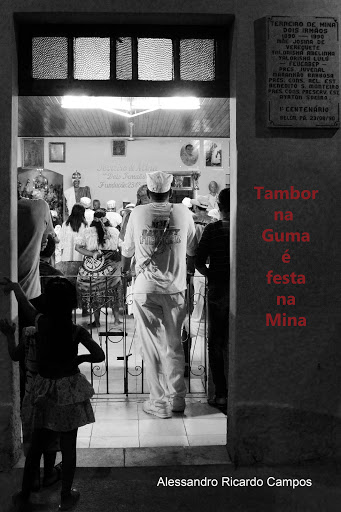Drum in Guma is Ceremony in the Mine
Keywords:
Paraense Mine Tambor, Religious community, Casa de Mina Dois Irmãos, African-religious party, African-religious sacred music.Abstract
"No sound, no drum, my son ... there is no ceremony, no party. It is necessary that the touch is just right ... cute for the Voduns to come and be happy, "tells me quietly wise Mother Lulu, current head of the House of My Brothers, the oldest house of the Drum of Bethlehem, founded in 1890, in one of the pleasant afternoon I was with her. The parties are central and very important for integration, intimate, between sons and daughters, mothers and fathers-of-saint, deities and the community that exists around the yard. There, ties are rebuilt, strengthened and resolved issues. They are unique situations, marked by joy and respect. Music plays a central role in all this. It is what animates, gives the rhythm, calls Voduns, guides, and Caboclos Delighted to dance in guma and it is also who sends them back when the time comes. It is the sound of the ringing of drums and chants that the supporters go into trances. Its function is to perform the sacred music that will transform the routine of community-yard in an extraordinary world inhabited by gods and ancestors (BARROS PERSON, 2005).
Who cadence and governs the "Orchestra Ritual" are the drums. Treated as entities that are really: eat, drink and are revered with great respect, they are surrounded by traditions and taboos, from their manufacture to their consecration and use. Their colors and ornaments will depend on the divinity to which it was established and which party / ritual is taking place. They have such importance that in some cases the very term "drum" means the religion itself. When you say "will have drum", "be the drum" or "drum beat" means it will have ritual, celebration and belonging to a african-Brazilian religion.
Ritual orchestras Mina-Nagô, as is known to Paraense Mina, are controlled by "Abatazeiros", drummers or Alagbês. To them fit the maintenance, tuning and maintenance of instruments, as well as the initiation of the youngest in the art, in addition to providing the consecration ceremonies of a drum. This photo essay is composed of photographs that were taken in the anthropological research developed in the Casa Mina de Dois Irmãos.
Credits:
Author:Alessandro Ricardo Campos
Photographs:Alessandro Ricardo Campos
Trusteeship:Alessandro Ricardo Campos

Downloads
Published
Issue
Section
License

This work is licensed under a Creative Commons Attribution-NonCommercial 4.0 International License.
Direitos Autorais para trabalhos audiovisuais publicados na AntHropológicas Visual sã licenciados para uma licenca Creative Commons 4.0 BY-NC.
